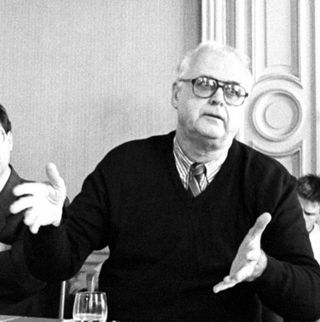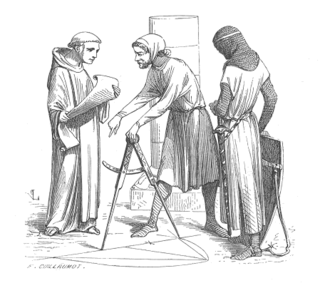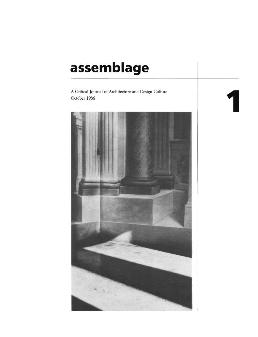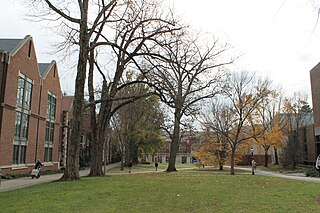Related Research Articles
Critical regionalism is an approach to architecture that strives to counter the placelessness and lack of identity of the International Style, but also rejects the whimsical individualism and ornamentation of Postmodern architecture. The stylings of critical regionalism seek to provide an architecture rooted in the modern tradition, but tied to geographical and cultural context. Critical regionalism is not simply regionalism in the sense of vernacular architecture. It is a progressive approach to design that seeks to mediate between the global and the local languages of architecture.

Archigram was an avant-garde British architectural group whose unbuilt projects and media-savvy provocations "spawned the most influential architectural movement of the 1960's," according to Peter Cook, in the Princeton Architectural Press study Archigram (1999). Neofuturistic, anti-heroic, and pro-consumerist, the group drew inspiration from technology in order to create a new reality that was expressed through hypothetical projects, i.e., its buildings were never built, although the group did produce what the architectural historian Charles Jencks called "a series of monumental objects (one hesitates in calling them buildings since most of them moved, grew, flew, walked, burrowed or just sank under the water." The works of Archigram had a neofuturistic slant, influenced by Antonio Sant'Elia's works. Buckminster Fuller and Yona Friedman were also important sources of inspiration.

Postmodern architecture is a style or movement which emerged in the late 1950s as a reaction against the austerity, formality, and lack of variety of modern architecture, particularly in the international style advocated by Philip Johnson and Henry-Russell Hitchcock. The movement was introduced by the architect and urban planner Denise Scott Brown and architectural theorist Robert Venturi in their 1972 book Learning from Las Vegas. The style flourished from the 1980s through the 1990s, particularly in the work of Scott Brown & Venturi, Philip Johnson, Charles Moore and Michael Graves. In the late 1990s, it divided into a multitude of new tendencies, including high-tech architecture, neo-futurism, new classical architecture, and deconstructivism. However, some buildings built after this period are still considered postmodern.
The New York Five was a group of architects based in New York City whose work was featured in the 1972 book Five Architects. The architects, Peter Eisenman, Michael Graves, Charles Gwathmey, John Hejduk, and Richard Meier, are also often referred to as "the Whites". Other architects and theorists have been associated with the group, including Werner Seligmann, Kenneth Frampton, Colin Rowe, and Gwathmey's partner Robert Siegel.

John Quentin Hejduk was an architect, artist and educator from New York City. Hejduk studied at the Cooper Union School of Art and Architecture, the University of Cincinnati, and the Harvard Graduate School of Design. He worked in several offices in New York including that of I. M. Pei and the office of A.M. Kinney. He established his own practice in New York City in 1965.

Architectural theory is the act of thinking, discussing, and writing about architecture. Architectural theory is taught in all architecture schools and is practiced by the world's leading architects. Some forms that architecture theory takes are the lecture or dialogue, the treatise or book, and the paper project or competition entry. Architectural theory is often didactic, and theorists tend to stay close to or work from within schools. It has existed in some form since antiquity, and as publishing became more common, architectural theory gained an increased richness. Books, magazines, and journals published an unprecedented number of works by architects and critics in the 20th century. As a result, styles and movements formed and dissolved much more quickly than the relatively enduring modes in earlier history. It is to be expected that the use of the internet will further the discourse on architecture in the 21st century.

Kenneth Brian Frampton is a British architect, critic and historian. He is regarded as one of the world's leading historians of modernist and contemporary architecture. He is an Emeritus Professor of Architecture at the Graduate School of Architecture, Planning, and Preservation at Columbia University, New York, where he taught for over 50 years. He is a citizen of Britain and the United States.

Deconstructivism is a postmodern architectural movement which appeared in the 1980s. It gives the impression of the fragmentation of the constructed building, commonly characterised by an absence of obvious harmony, continuity, or symmetry. Its name is a portmanteau of Constructivism and "Deconstruction", a form of semiotic analysis developed by the French philosopher Jacques Derrida. Architects whose work is often described as deconstructivist include Zaha Hadid, Peter Eisenman, Frank Gehry, Rem Koolhaas, Daniel Libeskind, Bernard Tschumi, and Coop Himmelb(l)au.

Assemblage was an architectural theory journal published by MIT Press from 1986 to 2000.

Rick Joy is an American architect. Rick Joy is Principal of Studio Rick Joy, an architecture and planning firm established in 1993 in Tucson, Arizona.

The Institute for Architecture & Urban Studies is a non-profit architecture studio and think tank located in Manhattan, New York, United States. The original Institute existed from 1967 to 1984, where it was a hub for experimental architectural discourse and practice. It re-opened in 2003 as a non-profit offering individualized summer architecture studios.
Diana I. Agrest is a practicing architect and urban designer and an architecture and urban design theorist, in New York City.
Kenneth Michael Hays is an American architectural historian and professor. He currently serves as Eliot Noyes Professor of Architectural Theory at Harvard University's Graduate School of Design. He is also co-director of the school's doctoral programs, namely Ph.D and DDes or Doctor of Design.
George Joseph Ranalli is an American modernist architect, scholar, curator, and fellow of the American Institute of Architects. He is based in New York City.
Patkau Architects is an architecture firm based in Vancouver, British Columbia, Canada. It is a full-service firm practicing in Canada and the United States. Its project scope includes, but is not limited to, gallery installations, art galleries, libraries, university buildings, urban planning and private residences. The firm has received numerous national and international architectural awards. Patkau Architects also represented Canada at the Venice Biennale in 2006.
Leslie Kanes Weisman is an American architecture educator, activist and community planning department official. Weisman was one of the founding faculty members of the New Jersey Institute of Technology School of Architecture in Newark, New Jersey. She was also one of the founders of the Women's School of Planning and Architecture.
Mario I. Gandelsonas is an Argentine-American architect and theorist whose specializations include urbanism and semiotics.

306090 was an independent architecture journal and book series produced from 2002 to 2013 by nonprofit arts stewardship 306090, Inc., and distributed by Princeton Architectural Press. 306090 published nine multi-authored thematic journal volumes, six thematic books, and one special issue that served as the official catalog for the United States Pavilion at the 2010 Venice Biennale of Architecture.

Princeton University School of Architecture is the name of the school of architecture at Princeton University. Founded in 1919, the School is a center for teaching and research in architectural design, history, and theory. The School offers an undergraduate concentration and advanced degrees at the master's and doctoral levels.
References
- Hays, K. Michael (1998). Oppositions Reader: Selected Essays 1973-1984. Princeton Architectural Press. ISBN 978-1-56898-153-6.
- Ockman, Joan (1988). "Resurrecting the Avant-Garde: The History and Program of Oppositions". In Colomina, Beatriz (ed.). Architectureproduction. New York: Princeton Architectural Press. pp. 180–199. ISBN 978-0-91041-320-6.